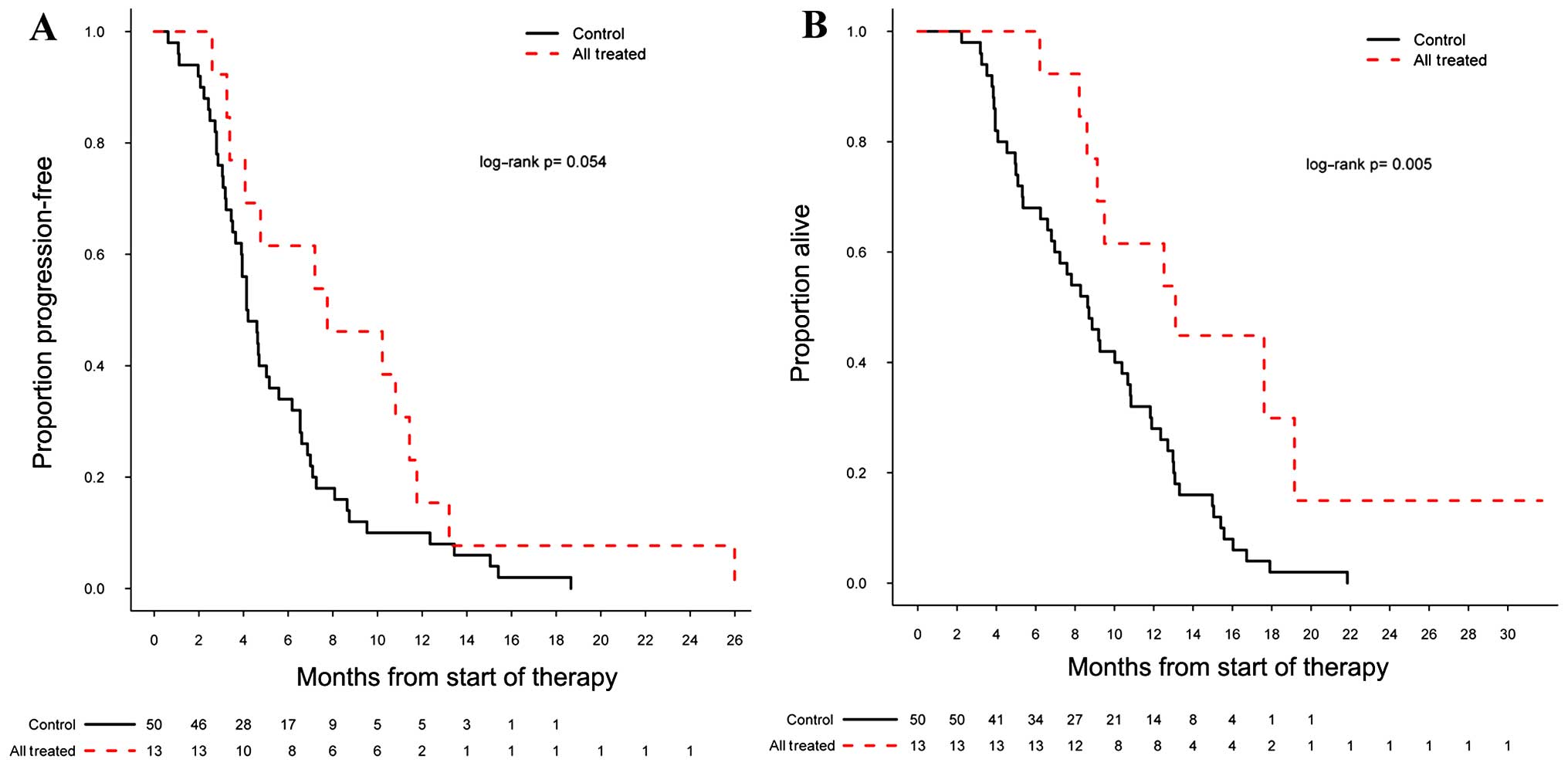Valganciclovir and bevacizumab for recurrent glioblastoma: A single-institution experience
- Authors:
- Published online on: December 4, 2015 https://doi.org/10.3892/mco.2015.692
- Pages: 154-158
Metrics:
Total
Views: 0 (Spandidos Publications: | PMC Statistics:
)
Total PDF Downloads: 0 (Spandidos Publications: | PMC Statistics:
)
Abstract
Prolonged treatment with adjuvant valganciclovir has been shown in one retrospective study to exert a significant effect on overall survival (OS) in newly diagnosed patients with glioblastoma multiforme (GBM). However, studies evaluating the effectiveness of valganciclovir in the treatment of recurrent GBM have not been performed. We evaluated the effect of valganciclovir in the recurrent setting in combination with bevacizumab therapy. A retrospective analysis was performed on patients treated for recurrent GBM with off‑label valganciclovir and bevacizumab at Vanderbilt University. We identified 13 patients who received valganciclovir plus bevacizumab at some point during their treatment, 8 of whom were started on valganciclovir and bevacizumab concurrently upon first recurrence, whereas 5 had valganciclovir added to their bevacizumab regimen prior to a second recurrence. of these patients, 12 were pathologically confirmed to have GBM, and 1 patient was diagnosed with gliosarcoma. We also identified an institutional cohort of 50 patients who had not been exposed to valganciclovir, but were treated with bevacizumab for first recurrence. The progression‑free survival (PFS) at 6 months (PF6) and median OS (mOS) in the valganciclovir plus bevacizumab group was 62% and 13.1 months, respectively, for all 13 patients, and 50% and 11.3 months, respectively, for the 8 concurrently treated patients. In the institutional bevacizumab cohort, the PF6 and mOS were 34% and 8.7 months, respectively. In this retrospective analysis, valganciclovir in combination with bevacizumab exhibited a trend toward improved survival in patients with recurrent GBM. However, given the small sample size and the retrospective nature of this study, a larger prospective study is required to confirm these results.












